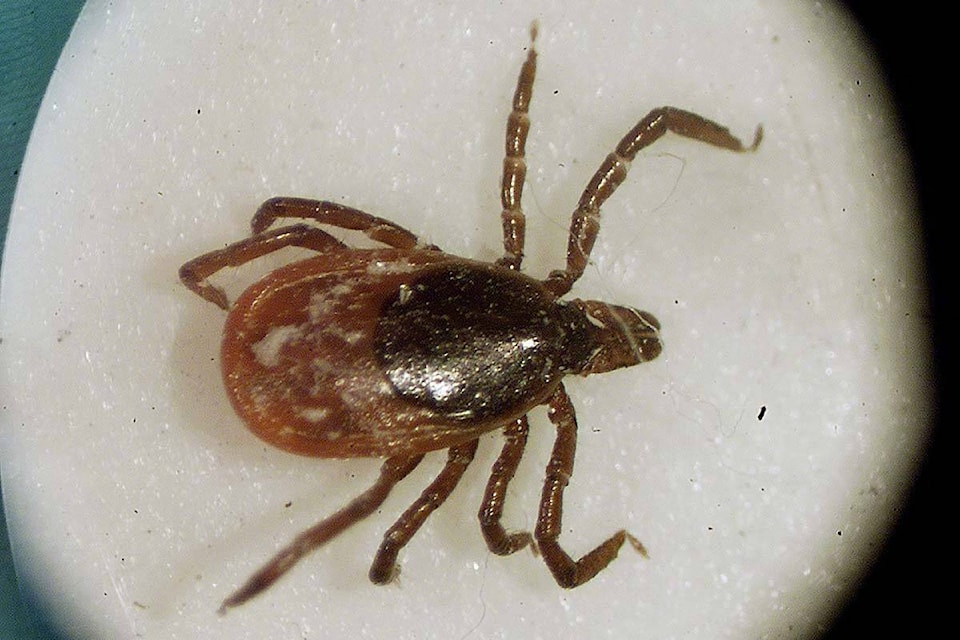As temperatures heat up and B.C. residents prepare to spend more time outdoors, they can now turn to an online map to see which areas of the province house a higher number of Lyme-disease carrying ticks.
Launched by the BC Centre for Disease Control (BCCDC), the map allows users to zoom in on their own community or areas where they intend to visit to better understand their risk should they be bitten.
B.C.’s ticks have one of the lowest Lyme disease rates in Canada at less than one in 100, but the BCCDC says they still pose a real risk.
Left untreated, Lyme disease can cause severe headaches, facial palsy, arthritis, nerve pain and dizziness, among other things.
Across Canada, the rate of Lyme disease has increased significantly over the last decade, from 144 cases in 2009 to 2,851 in 2021, according to public health data. The actual number is believed to be higher as some cases go undetected or unreported.
The BCCDC’s map is a reminder to British Columbians to take precautionary measures and always check for ticks after being outdoors. Caught early, Lyme disease can usually be treated with antibiotics.
The BCCDC says people can reduce their risk of being bitten by walking on cleared paths, applying insect repellent, wearing light coloured clothing so ticks are easily spotted, and tucking that clothing in. After being in a tick-heavy area, people should take a bath or shower to shake off any lightly-attached ones, do a fully body check, and put clothing in the dryer on hot for 10 minutes.
If a tick has already burrowed itself into a person’s skin, they should use tweezers to carefully remove it – not by covering it in grease or burning it, as some believe. Those methods will only increase the chance of infection, the BCCDC says.
READ ALSO: The BCCDC needs your help identifying ticks and limiting Lyme disease
Once the tick is removed, people are encouraged to put it in the freezer and submit a photo to the BCCDC’s eTick app. If the tick is identified as a type known to carry Lyme disease, the person will be asked to keep the tick in their freezer for 30 days and monitor themselves for symptoms of the disease.
This information allows the BCCDC to keep its risk map up-to-date. It can be found at maps.bccdc.ca/Lyme.
